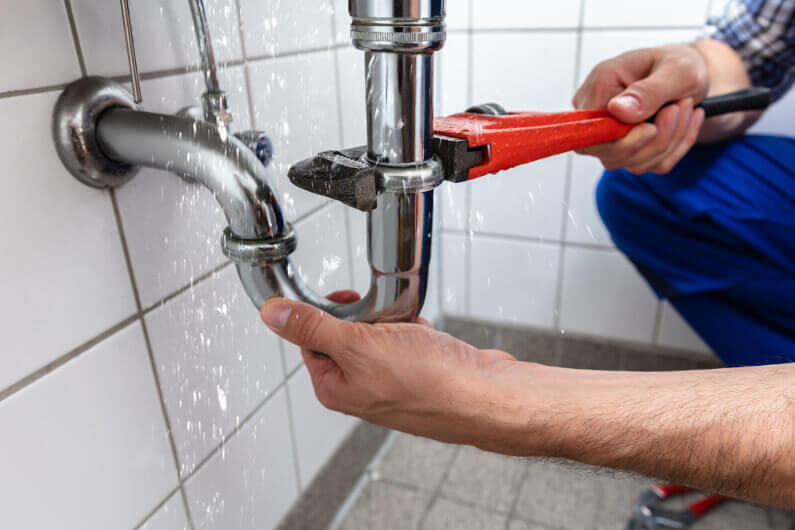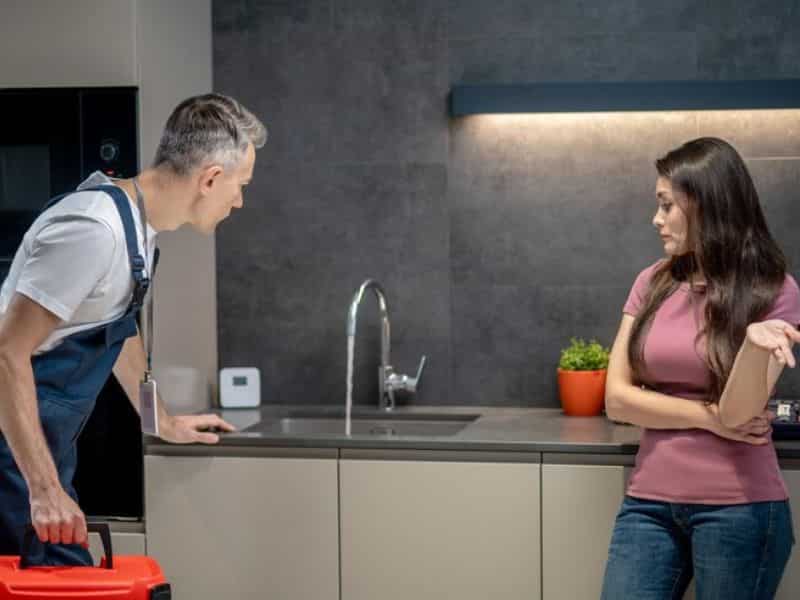Delving into the Basics of Home Plumbing: A Beginner's Tutorial
Delving into the Basics of Home Plumbing: A Beginner's Tutorial
Blog Article
Just about every person has their own unique rationale when it comes to Understanding the Basics of Your Home's Plumbing System.

Plumbing is a crucial element of any type of home, in charge of supplying tidy water for drinking, cooking, and bathing, in addition to eliminating wastewater securely. Comprehending the basics of home plumbing is essential for every single homeowner to make sure proper upkeep, troubleshooting, and, if needed, fixings. In this beginner's guide, we'll cover the fundamental principles of home plumbing to assist you end up being extra aware of just how it works.
Water System
The supply of water system brings tidy water into your home from a local water source or an exclusive well. It includes a main water line that attaches to your home's plumbing system, normally located underground. A water meter gauges the quantity of water eaten, while a shut-off valve permits you to control the flow of water right into your home.
Plumbing Components
Plumbing components are gadgets that supply water to numerous parts of your home and include sinks, faucets, commodes, showers, bath tubs, and home appliances such as dishwashing machines and cleaning makers. Each component is connected to the supply of water system by means of pipelines and fittings and might have its shut-off valve for upkeep or emergencies.
Water Heater
The water heating system is in charge of home heating water for residential use, consisting of showering, food preparation, and cleansing. Usual sorts of water heaters include tank-type hot water heater, tankless (on-demand) water heaters, and heatpump hot water heater. The hot water heater is linked to the water system system and supplies hot water to plumbing fixtures as required.
Drain System
The drainage system gets rid of wastewater from your home and lugs it away to a sewage treatment center or septic tank. It consists of a network of pipes, installations, and fixtures that transfer wastewater from plumbing fixtures to the main sewage system line or sewage-disposal tank. Proper drain is essential to prevent clogs, back-ups, and sewage leakages.
Ventilation System
The air flow system helps maintain correct air pressure and avoid sewage system gases from entering your home. Air vent pipes, additionally known as air vent heaps, expand from plumbing components to the roofing, permitting sewage system gases to leave securely outdoors. Ventilation pipelines additionally permit air to enter the water drainage system, assisting in smooth wastewater flow and preventing suction or vacuum effects.
Common Plumbing Devices
Having the right devices on hand is vital for carrying out fundamental plumbing fixings and upkeep jobs. Usual plumbing tools consist of adjustable wrenches, pipe wrenches, pliers, pipe cutters, hacksaws, bettors, augers (or drain snakes), and Teflon tape. Having these tools easily offered can help you take on minor plumbing problems successfully.
Standard Plumbing Repair Services
While some plumbing repair work may need expert support, lots of common problems can be resolved with standard DIY techniques. Understanding how to repair a dripping faucet, unblock a drain, replace a commode flapper, or repair a trickling showerhead can save you money and time on plumbing repair work.
Verdict
Understanding the fundamentals of home plumbing is important for every single house owner to maintain a risk-free, practical, and effective plumbing system. By familiarizing yourself with the supply of water system, plumbing fixtures, water drainage system, air flow system, common plumbing devices, and fundamental repairs, you can confidently address small plumbing issues and ensure your home's plumbing system runs efficiently.
Plumbing for Beginners: A Comprehensive Guide
If you’re a beginner when it comes to plumbing, don’t worry; you’re not alone. Plumbing may seem intimidating, but with the right knowledge and a little practice, you can handle many common plumbing issues on your own. In this comprehensive guide, we will demystify the world of plumbing for beginners, providing you with the basic knowledge and skills needed to tackle common plumbing problems and even take on some DIY plumbing projects.
The Importance of Basic Plumbing Knowledge for Beginners:
First and foremost, basic plumbing knowledge gives you a solid foundation. It helps you grasp the key concepts and terminology that are essential in this field. By learning the basics, you’ll be able to build upon that knowledge and tackle more complex plumbing tasks in the future.
Having a basic understanding of plumbing also enables you to handle common issues that may arise in your home. Picture this: a leaky faucet or a clogged drain. With some basic plumbing knowledge, you’ll have the confidence to troubleshoot and fix these problems on your own. It saves you from unnecessary expenses and the hassle of waiting for a professional to arrive.
As a beginner, learning the basics of plumbing empowers you to take care of your own home. It gives you a sense of independence and self-reliance. You’ll no longer have to rely solely on professionals for every small issue that pops up. Instead, you can handle many tasks yourself, saving time and money in the process.
Remember, everyone starts as a beginner. Embrace the learning process and take small steps to expand your plumbing knowledge. There are plenty of online resources, tutorials, and even local workshops that talk about plumbing for beginners.
Essential Tools for Plumbing for Beginners
As you start your plumbing journey, having the right tools in your toolbox is crucial. Let’s explore some of the must-have tools:
Adjustable Wrench:
This versatile tool is a staple in any plumber’s toolbox. It allows you to tighten or loosen nuts and bolts of various sizes. Make sure to have an adjustable wrench with a comfortable grip.
Pipe Wrench:
A pipe wrench is specifically designed for gripping and turning pipes. It has serrated jaws that provide a strong grip, making it easier to loosen or tighten threaded pipes and fittings.
Plunger:
The plunger is a simple yet effective tool for clearing clogged drains and toilets. It creates suction when you push and pull, helping to dislodge blockages. Keep a good-quality plunger handy for those unexpected clogs.
Pipe Cutter:
When it comes to cutting pipes, a pipe cutter is your go-to tool. It creates clean, precise cuts without damaging the pipe. Look for a pipe cutter that can handle the pipe sizes you’re working with.
Hacksaw:
A hacksaw is useful for cutting through pipes, screws, and other materials. It’s a versatile tool that can handle different cutting tasks. Remember to use a blade suitable for cutting metal.
Tape Measure:
Accurate measurements are crucial in plumbing. A tape measure allows you to measure pipe lengths, distances, and dimensions accurately. Opt for a sturdy tape measure that extends a good length.
Pliers:
Pliers come in handy for various tasks, such as gripping, bending, and cutting. Slip-joint pliers with adjustable jaws are great for gripping pipes, nuts, and bolts.

I ran across that blog entry on while doing a lookup on the internet. Sharing is caring. Helping others is fun. Thank-you for going through it.
Call Today Report this page